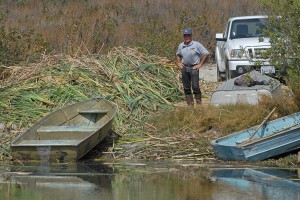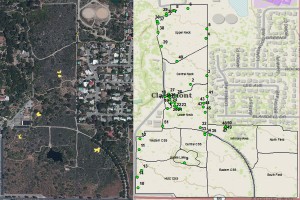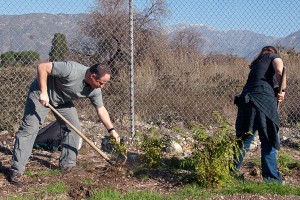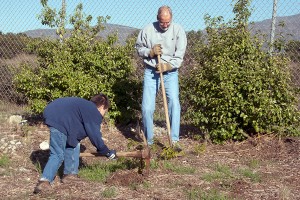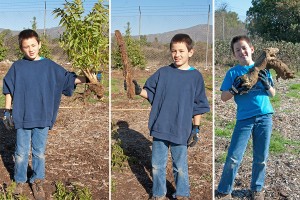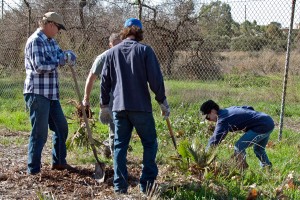One of the initiatives our Interim Manager, Dr. Jennifer Gee, has undertaken this year is to produce a BFS Vegetation Management Plan, which she developed in consultation with Dr. Chris McDonald, Desert Natural Resources Advisor for the University of California Cooperative Extension, San Bernardino County.
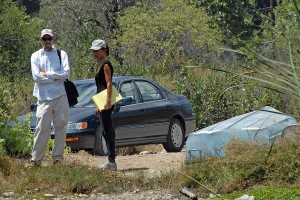
Dr. Chris McDonald, UC Extension Service, and Dr. Jennifer Gee, BFS Interim Manager, contemplate the cattail problem at pHake Lake.
The goals of the Vegetation Management Plan are to preseve the academic and ecological functions of the Field Station, to maintain fire safety, and to monitor and manage exotic, invasive, and pest species.
The Plan was approved by the BFS Faculty Advisory Committee this fall, and we are now beginning to implement the plan, using a combination of outside contractors, interns, Claremont College classes, and volunteers. Here are some the vegetation management activities that have been going on this fall:
- Cattail control:
pHake Lake has a thriving population of Broad-leaved Cattails, Typha latifolia, which grow very rapidly and would take over large portions of the lake if we did not trim them back. Our goal for cattail control is to maintain some open shoreline for boat-launching and observation as well as some relatively open shallow-water areas for wading birds and dabbling ducks, while retaining areas of dense cattails for use by birds like American Coots, Song Sparrows, Yellowthroats, and the occasional Virginia Rail or Sora.In September Johnny’s Tree Service trimmed back cattails from the boat landing area, the south shore “beach”, and shallow area around the little island in the northeast corner of the lake. - Mapping exotics and invasives:
Monitoring exotic, invasive, and pest plants is an essential part of the vegetation management plan, and we’ve started using GIS to map the location of some of these plants. Prof. Elise Ferree’s Keck Science class, Bio 57–Concepts In Biology, mapped the locations of Century Plants (Agave americana) and Peruvian Pepper Trees (Schinus molle), and Christi Gabriel, Seeds of Success Intern at RSABG, has mapped a number of additional trees. - Removing invasive plants:
Volunteer workers have started removing invasive plants from the BFS perimeter to prevent their incursion into the field station. Last Saturday’s volunteers targeted Tree-of-Heaven, Ailanthus altissima. This is a highly invasive species, native to the far east, including China and Taiwan. Last summer as part of weed abatement for the LA County Fire Department, Johnny’s Tree Service dug out a group of trees that had colonized the highly disturbed strip of land between Foothill Blvd and the BFS fence. But with the recent rains, small trees have resprouted vigorously, and volunteers rooted these out.The little trees, however, proved to be attached to very large roots, so the task was not as easy as it appeared.
Once the Trees-of-heaven were dug out, we scoured the rest of the perimeter for other invasives and also removed one small eucalyptus tree, one Tree Tobacco, and small colony of Mexican Fan Palms.
